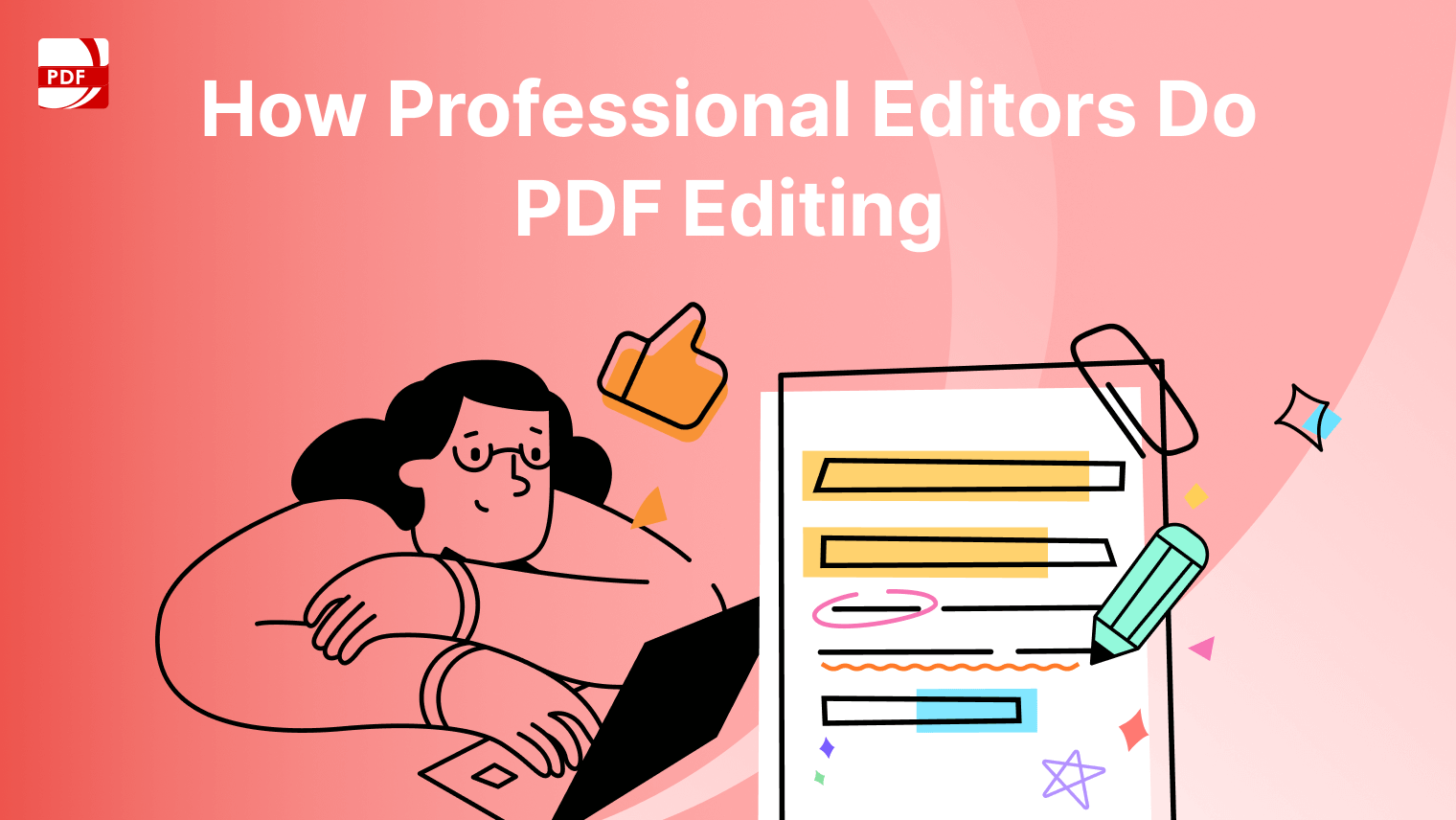Not all PDFs allow for easy search of terms; some lack this capability, making it hard to find specific text, especially in lengthy documents or image files.
PDF Reader Pro simplifies this with tools that make PDFs searchable, offering best practices, advantages, and answers to common questions about its file conversion function.
How to Make a PDF Searchable with Windows
Step 1: Open Your Original Document
Open the file you want to search, including pages with an image layer. 
Image Source: PDF Reader Pro
Step 2: Open the PDF Search Bar
Use the top left tab labeled "Panel" and click the magnifying glass to search, or use the built-in search functionality on the top right menu bar.

Image Source: PDF Reader Pro
For scanned files and image documents:
Step 1: OCR
Click "OCR" on the Menu Bar.

Image Source: PDF Reader Pro
Step 2: Extract Searchable Content
Click "OCR" in the document window to extract any text on the selected pages from your document properties. 
Image Source: PDF Reader Pro
Step 3: Convert Documents
You can now convert documents' content to a searchable PDF format. Before you do so, check the document for errors, as all text is extracted without the original format. 
Image Source: PDF Reader Pro
How to Make a PDF Searchable with Mac
Step 1: Click "Panel" on the Top Left Corner
Access document indexing by clicking the tool "Panel".
Step 2: Click the Magnifying glass
Type your search query into the PDF search bar or alternatively, use the search bar on the top right, and the results will also appear in this pane

Image Source: PDF Reader Pro
For scanned files or images in the document structure:
Step 1: Click "OCR" Function
The OCR tool allows you to extract scanned PDF documents and read text on images. 
Image Source: PDF Reader Pro
Step 2: Use the OCR Tool to Start the Extraction Process
Once you click "OCR", the tool will convert all text into an editable format. 
Image Source: PDF Reader Pro
Step 3: Save as a Searchable PDF
Thanks to PDF Reader Pro's intelligent document processing, you now have a text-searchable PDF. 
Image Source: PDF Reader Pro
PDF Reader Pro's OCR feature stands out for its accuracy in converting scanned documents and images into editable and searchable text, making it an invaluable tool for managing digital documents.

Beyond OCR, it offers a suite of powerful features, particularly in security, including strong encryption and password protection, ensuring my documents remain safe and confidential.
This comprehensive functionality is why I rely on PDF Reader Pro for all my PDF-related needs, from document editing and annotation to ensuring top-notch security.
When to Use The OCR Feature
The OCR (Optical Character Recognition) feature is particularly useful in several scenarios, making it a versatile tool for digitizing and processing documents. Here are situations when to use OCR:

- Converting Scanned Documents to Editable Text: When you have scanned documents or images of text that you want to convert into an editable format, OCR allows you to transform these images into searchable, editable text files.
- Making PDFs Searchable: For PDFs that are essentially images of text (such as scanned pages), OCR makes the content searchable by recognizing and digitizing the text within the images, facilitating easy search of terms or phrases.
- Digitizing Printed Materials: If you're looking to digitize books, magazines, or any printed materials into a format that allows text manipulation and searchability, OCR is the go-to technology.
- Data Extraction from Images: OCR can be used to extract text from images or documents for data entry processes, saving time and reducing manual entry errors.
- Accessibility Enhancements: Making documents searchable and editable via OCR improves accessibility, allowing screen readers to interpret and vocalize the text for visually impaired users.
- Archiving and Record Keeping: For organizations looking to archive their documents digitally, OCR ensures that the archived content is searchable and easily retrievable.
- Legal and Research Documents Handling: In fields that require dealing with vast amounts of documents, OCR helps quickly find relevant information within those documents.
- Translating Documents: After converting image-based text into editable text using OCR, you can use translation software to translate the document into different languages.
- Handwritten Note Recognition: Advanced OCR technology can recognize and digitize handwritten notes, although the accuracy depends on the handwriting's clarity.
- Improving Workflow Efficiency: In any scenario where handling and processing large volumes of paper-based information is required, OCR streamlines workflows by digitizing documents for easy distribution, search, and editing.

OCR is a powerful feature that enhances document management across various contexts, making it an essential tool for modern digital workflows.

How to Make PDF Text Searchable: FAQs
Is the OCR process always accurate?
While OCR technology has significantly advanced, accuracy depends on the quality of the source document. Clean, high-resolution scans yield better results than poor-quality images or handwriting.
How long does it take to make a PDF searchable?
The time it takes depends on the document's length and the complexity of its layout. Simple documents can be processed in seconds or minutes, while longer documents with complex layouts may take longer.
Can OCR recognize handwriting in PDFs?
Some advanced OCR tools can recognize clear, consistent handwriting, but accuracy rates are generally lower than for typed text. Results vary widely based on the handwriting's legibility.
What do I do if OCR isn't accurate?
Most PDF editing tools allow you to manually correct OCR errors. Ensuring the original scan is as clear as possible also helps improve OCR accuracy.
Does making a PDF searchable change its appearance?
No, the process doesn’t alter the appearance. OCR works in the background to add a text layer, keeping the original image intact.








 Free Download
Free Download  Free Download
Free Download 





 Support Chat
Support Chat